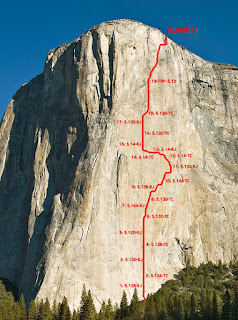Duelo de Gigantes: Mulheres em busca do reconhecimento + Duel of Giants: Women seeking recognition
No dia 27 de Abril a sul-coreana Oh Eun-Sun tornou-se a primeira mulher a escalar os catorze picos mais altos do mundo – pelo menos é o que ela diz.
No alpinismo não existe uma competição por medalhas, mas sim por resistências e conquistas inéditas, ser o primeiro a realizar algo é tão fascinante quanto ser o último, no entanto da mais destaque. Esta disputa, no alpinismo, serve de parâmetro para os próximos desafios. Por isso, surgem duvidas quanto aos feitos principalmente quando os dados não são esclarecidos. A TV da Coreia do Sul transmitiu, ao vivo, a cena da sul-coreana Oh Eun-Sun fincando a bandeira de seu país no topo do Monte Annapurna I, de 8.091 metros, no Nepal.
De acordo com o jornal The Korea Times, Oh Eun-Sun começou suas escaladas há 13 anos, chegando ao topo do Gasherbrum 2, a 8.035 metros, um dos 14 picos com mais de 8 mil metros de altura do mundo, em julho de 1997.
Em 2004 ela escalou o Everest, a montanha mais alta do mundo com 8.848 metros de altura. E no dia 27 de abril conquistou o Annapurna, de 8.091 metros, o décimo mais alto do mundo, porém considerado um dos mais perigosos.
Esta foi a segunda tentativa de Sun. Ela desistiu da escalada do Annapurna em outubro de 2009, devido ao clima.
Com 1,54 metro de altura e pesando apenas 50 quilos ela chegou ao topo sem levar suprimentos de oxigênio por volta das 18h16, 13 horas e 16 minutos depois de ter deixado o acampamento, de acordo com o The Korea Times.
Oh Eun-Sun reivindica, com esse feito, o título de primeira mulher a escalar todas as catorze montanhas do mundo com mais de 8 000 metros de altitude.
Isso pode até ser aceito pelos livros de compilação de recordes, mas não pela comunidade internacional de alpinistas. Este feito é contestado por três razões principais:
* A primeira é que, nas subidas e descidas, ela respira com o auxílio de tubos de oxigênio para compensar a falta desse gás no ar rarefeito das altas montanhas.
* A segunda razão pela qual Oh Eun-Sun é criticada refere-se à falta de provas confiáveis da sua ascensão ao Kanchenjunga, de 8.586 metros em 2009.
* O terceiro motivo para desconfiança é que Oh Eun-Sun nunca conversou com a americana Elizabeth Hawley, uma senhora de 86 anos que mantém o registro mais confiável das expedições no Himalaia.
Todo alpinista que quer ser respeitado pelos seus pares, após voltar das escaladas, se submete ao crivo de Elizabeth.
Outras duas esportistas, a espanhola Edurne Pasabán e a austríaca Gerlinde Kaltenbrunner, disputam o privilégio de ser as primeiras a completar o circuito alpino.
Gerlinde, para quem ainda faltam dois picos de mais de 8 000 metros por alcançar, escala sem tubos de oxigênio, opta sempre pelas rotas menos usadas e faz questão de carregar o próprio equipamento – o que demanda muito mais energia na subida.
Bem diferente de Oh Eun-Sun , sempre acompanhada de sherpas, como são chamados os nepaleses contratados para carregar o equipamento da expedição. Oh também dava preferência às rotas mais fáceis e costumava chegar de helicóptero aos acampamentos-base. Isso lhe dava mais agilidade para ir de uma montanha a outra, tanto apoio logístico permitiu que a sul-coreana subisse nove dos catorze cumes em dois anos, em comparação à média de dois ou três picos por ano das adversárias.
Edurne Pasabán, que se preparava para escalar sua 14ª montanha da lista pôs em dúvida a veracidade da fotografia de Oh Eun-Sun no cume do Kanchenjunga.
A imagem divulgada pela sul-coreana mostra uma pessoa totalmente escondida sob uma roupa de frio, máscara e óculos, em meio a uma nevasca. É impossível ver o rosto de Oh Eun-Sun , tampouco reconhecer o cenário. A acusação foi repetida pelo alpinista sul-coreano Huh Young-ho, que também desconfiou da velocidade de ascensão da conterrânea.
Oh Eun-Sun afirma ter escalado os últimos 500 metros do Kanchenjunga em três horas e meia, sem o auxílio de tubos de oxigênio e debaixo de uma nevasca. Para Huh, isso é impossível. "A não ser, é claro, que estejamos diante de uma supermulher", disse ele. O alpinismo é propício para a briga de egos porque se trata, provavelmente, do único esporte em que o árbitro é o próprio atleta. Para obter o reconhecimento internacional, o que conta é a palavra do esportista, mais algumas provas refutáveis, como o testemunho de guias e fotografias tiradas no cume – sujeitas a manipulações.
Como não existe uma "fiscalização" no alpinismo para dar objetividade à definição dos verdadeiros recordistas e "campeões" da modalidade, Elizabeth Hawley, uma jornalista americana radicada no Nepal há cinquenta anos, tornou-se uma espécie de juíza honorária das expedições no Himalaia. Embora nunca tenha alcançado o pico de uma montanha, Elizabeth entrevista todos os alpinistas que reivindicam a subida aos cumes mais altos da cordilheira e consegue saber, durante a conversa, se alguém está mentindo. Seu questionário inclui perguntas sobre o clima no momento da escalada e sobre o que o montanhista viu pelo caminho. A americana é tão respeitada que o prefácio de sua biografia foi escrito pelo neozelandês Edmund Hillary, um dos primeiros homens a pisar no topo do Everest, em 1953, acompanhado do sherpa Tenzing Norgay. "Nunca falei pessoalmente com Oh Eun-Sun", disse Elizabeth. "Estou aguardando sua visita para descobrir por que os outros alpinistas duvidam dela." A sul-coreana pode até conseguir convencer a todo-poderosa Elizabeth da conquista do Kanchenjunga. Só não poderá evitar que seu feito seja catalogado pela americana como tendo sido realizado com a ajuda de oxigênio – um demérito, obviamente. Os tubos de oxigênio influenciam tanto no sucesso da escalada que, até dezembro passado, eram considerados doping pela Agência Mundial Anti-Doping. O equipamento foi retirado da lista proibida para evitar acidentes.
Acima dos 8 000 metros de altitude, a quantidade de oxigênio disponível no ar é um terço da existente no nível do mar. Por isso, há o risco, muitas vezes letal, de o esportista sofrer um edema cerebral ou pulmonar.
++++++++++++++++++++++++++++++++++++++++++++
On April 27 South Korea Oh Eun-Sun became the first woman to climb the fourteen highest peaks in the world - at least that's what it says.
In rock climbing there is a competition for medals, but by resistance and unprecedented achievements, be the first to accomplish something is to be as fascinating as the last, however the most prominent. This dispute, in mountaineering, servers as a parameter for the challenges ahead. Therefore, doubts arise as to those made especially when data are not clear. The South Korean TV broadcast, live, the scene of South Korea Oh Eun-Sun planting the flag of your country on top of Mount Annapurna I, 8.091 meters in Nepal.
According to Korea Times newspaper, Oh Eun-Sun began its climb 13 years ago, reaching the top of Gasherbrum 2, 8.035 meters, one of the 14 peaks over 8.000 meters high in the world in Jully 1997.
In 2004 she climbed Everest, the highest mountain in the world with 8.848 meters high. And on April 27 won the Annapurna, the 8.091 meters, the tenthe highest in the world but considered one of the most dangerous.
This was the second attempt she gave up the Sun clim of Annapurna in October 2009, due to weather.
With 1.54 meters tall and weighing only 50 pounds she reached the top without taking oxigen supplies at around 18h16, 13 hours and 16 minutes after leaving the camp, according to The Korea Times.
Oh Eun-Sun claims, with that done, the title of first woman to climb all fouteen mountains in the world with more than 8.000 meters of altitude.
Thatmay be accepted by compiling records of books, but not by the international community of climbers.
This achievement is challenged by three main reasons:
* The first that the ups and downs, she breathes with the help of oxygen tubes to compensate for lack of gas in the thin air of high mountains.
* The second reason why Oh Eun-Sun is criticized refers to the lack of credible evidence of his ascent to Kanchenjunga, the 8.586 meters in 2009.
* The third reason for suspicion is that Oh Eun-Sun never talked to the American Elizabeth Hawley, a lady of 86 years who maintains the most reliable record of the expeditions in the Himalayas.
Any climber who wants to be respected by his peers, after coming back fron climbing, submits to the scutiny of Elizabeth.
Two other athletes, the Spainsh Edurne Pasabán and Austrian Gerlinde Kaltenbrunner, vie for the privilege of being the first to complete the Alpine Circuit.
Gerlinde, who are still two peaks over 8.000 meters to achieve scale without oxygen tubes, always opts for less-used routes and makes sure to load the equipment itself - wich requires much more energy on the climb.
Quite different from Oh Eun-Sun, always accompanied by Sherpas, the Nepalese as they are called contracted to carry the equipament of the expedition. Oh Eun-Sun also gave preference to the routes easier and would arrive by helicopter to the base camps. This gave him more flexibility to go from one mountain to another, both logistical support that allowed South Korea's climbed nine of the fourteen peaks in two years, campared to an average of two os three peaks per year of opponents.
Edurne Pasabán, who was preparing to climb the mountain of its 14th list cast doubt on the veracity of the photograph Oh Eun-Sun on the summit of Kanchenjunga.
The picture released by South Korea Shows a totally hidden under a winter clothes, mask ad goggles, in a blizzard. It is impossible to see the face on Eun-Sun, nor recognize the scenery. The charge was repeated by South Korean climber Huh Young-ho, who also suspected the rise velocity of compatriot.
Oh Eun-Sun claims to have climbed the last 500 meters of Kanchenjunga in three and a half hours without the aid of oxygen tubes and under a blizzard. To Huh, that's impossible. "Unless, of course, we are facing a superwoman", he said. The climbing is suitable for the fight of egos bacause this is probably the only sport where the referee is the athlete. To abtain international recognition, what counts is the world of the sportsman, some more evidence refuting, as the testimony of guides and photographs taken at the summit - subect to manipulation.
Since there is no "fiscalization" in mountaineering to give objectivity to the definition of true record holders and champions of the sport, Elizabeth Hawley, an American journalist in Nepalrooted fifty years ago, became a sort of honorary judge of the expeditions in the Himalayas. Although he never reached the peak of a mountain, Elizabeth interview all climbers who calim to rise to the highest peaks of the mountains and get to know during the conversation, if someone is lying. Your questionary includes questions about the climate at time of the climb and the climber saw it on the road. The U.S. is so resoected that the preface of his biography was written by New Zealander Edmund Hillary, one of the first men to walk on top of Everest in 1953, accompanied by Sherpa Tenzing Norgay. " I've never spoken personally wiith Oh Eun-Sun", said Elizabeth. "I'm waiting for your visit to find out why the other climbers doubt it." South Korea may even convince the almighty Elizabeth's conquest of Kanchenjunga. Just can not prevent is done is cataloged by the U.S. as having been accomplished with the aid of oxygen - a demerit, obviously. Tubes of oxygen influences both the success of the climb that until last December, were considered doping by the World Anti-Doping. The equipment was removed from the banned list to prevent accidents.
Above 8.000 meters altitude, the amount of available oxygen in air is one-third of the existing sea level. Therefore, there is a risk, often lethal, the player has pulmonary or cerebral edema.



Comentários
Postar um comentário
Obrigado por seu comentário, opiniões são bem-vindas quando somam ao esforço de melhorar.